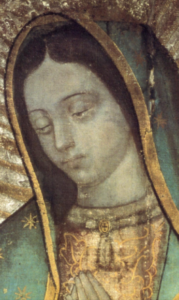
In name of Our Lord Jesus Christ, Amen.
My God, I believe, I hope, and I love You. I ask pardon for all those who do not believe, do not adore, do not hope, and do not love You.
My Lord and my God Jesus Christ, I thank You, for giving Yourself for us, and being forever present, in your all-encompassing sacrifice through the Eucharist, that we may have life in the Spirit, through Your Heart as Risen Christ. May we drink from the brimming heart of your joy, which is the wellspring of living waters. And be filled, to the full, with Your life, Your light, and Your love for Your glory, and our true good. In Your most Holy Name Jesus, You who live and reign, forever and ever, Amen.
Immaculate Heart of Mary, pray for us.
In his Easter homily, the Holy Father Pope Francis concludes by saying, “The Gospel is very clear. We need to go back there, to Galilee, to see Jesus Risen, and to become witnesses of his Resurrection.” This is not to go back in time. This is not a kind of nostalgia. This is returning to our First Love in order to receive the fire that Jesus has kindled in the world, and to bring that fire to all people, to the ends of the earth. “Go back to Galilee, without fear.”
The Gospel, at its core, of course is Christ, but as Christ communicates Himself to us, the implication of the Gospel is that it calls us to the fullness of authentic human living. That’s what the Gospel represents. It is not simply about the forgiveness of sins. The forgiveness of sins is a means to an end. We need to be forgiven, in order to be set free. But freedom is the gift. Forgiveness is a means— a necessary, unavoidable, indispensable, means — but the fruit of the gift is freedom. This freedom is the fullness of authentic human living.
His person, Jesus exhibits what that freedom means. By His example, His words, and His deeds, Jesus amplifies and makes visible what human life is ultimately about. He alone could express it, because He is the author of it.
One Orthodox study Bible provides commentaries to the Scriptures that represents Patristic spirituality and theology— the teaching of the Church Fathers of the early centuries of Christianity. In it, we find the words, “As we behold Him, we become what we were created to be.” As we behold Him we become what we were created to be.
God is infinite. Therefore, growing in His image and glory has no limits. We shall ever see God more clearly and ever be transformed into His likeness. The theme of transformation or transfiguration, the metamorphosis that St. Paul talks about, when reflecting on Jesus on Tabor, this metamorphosis is very prevalent in the Christian East — the Greek Fathers, the Syrian Fathers, and the Egyptian Fathers.
But it’s also found among the Western Church Fathers, saints, and mystics. For example, St. Augustine points out that the discovery of God’s face – the image of God –is never-ending. The more we discover God’s face, “The further we penetrate into the splendor of Divine Love…” as St. Augustine would say.
SOURCE: New Mexico Retreat, 2017, “First Love Exodus”










 December 12, Feast of Our Lady of Guadalupe
December 12, Feast of Our Lady of Guadalupe